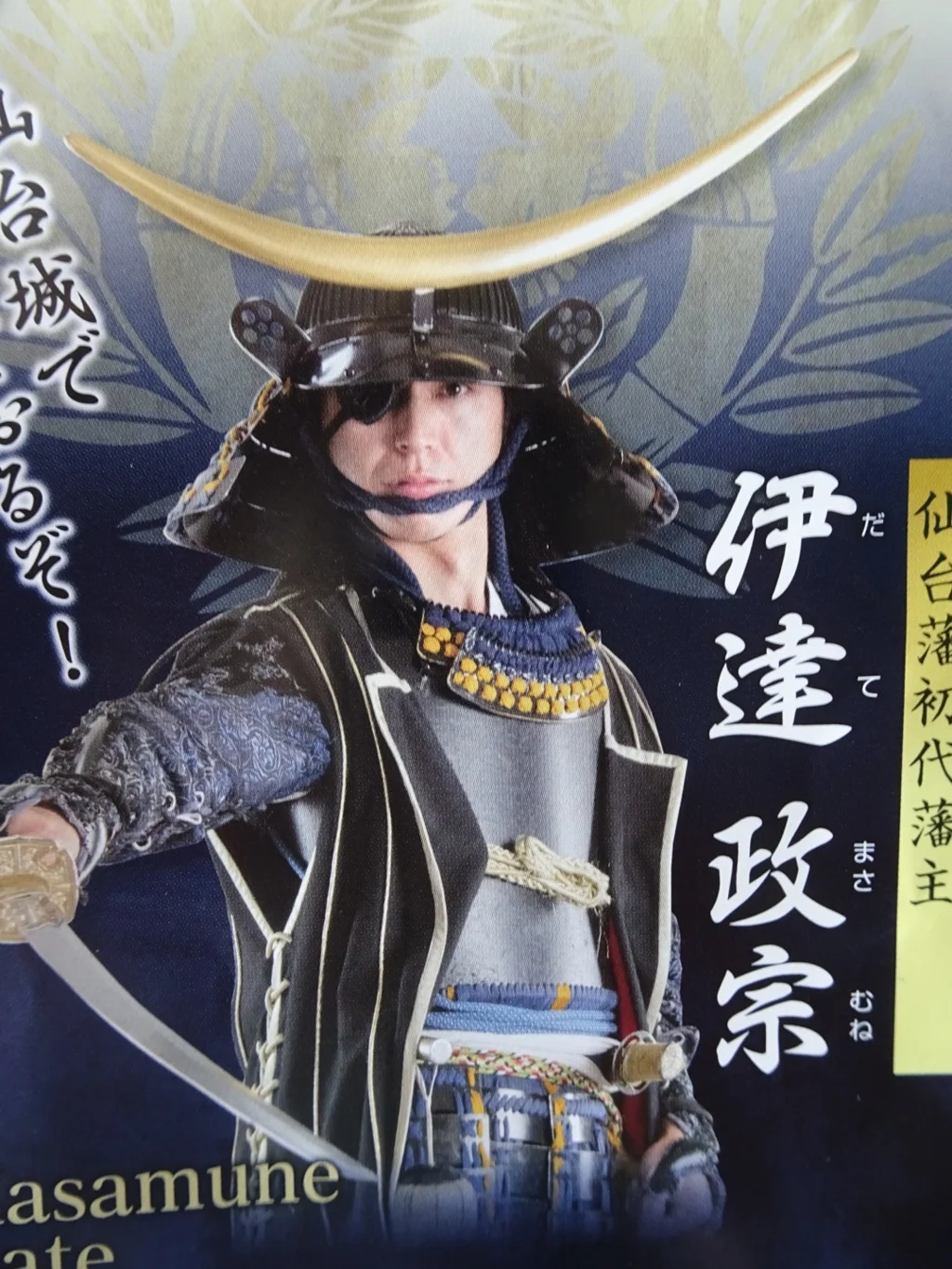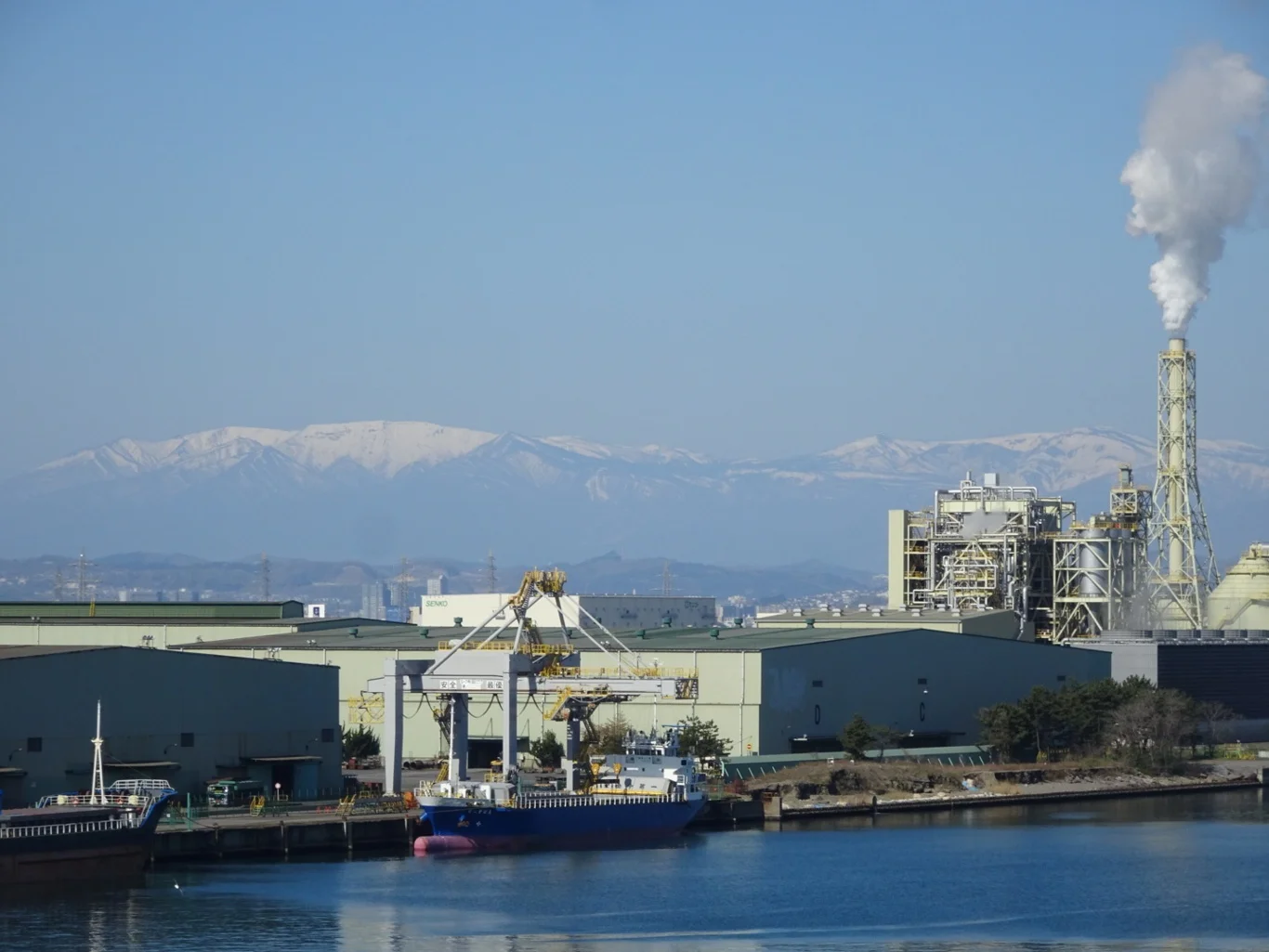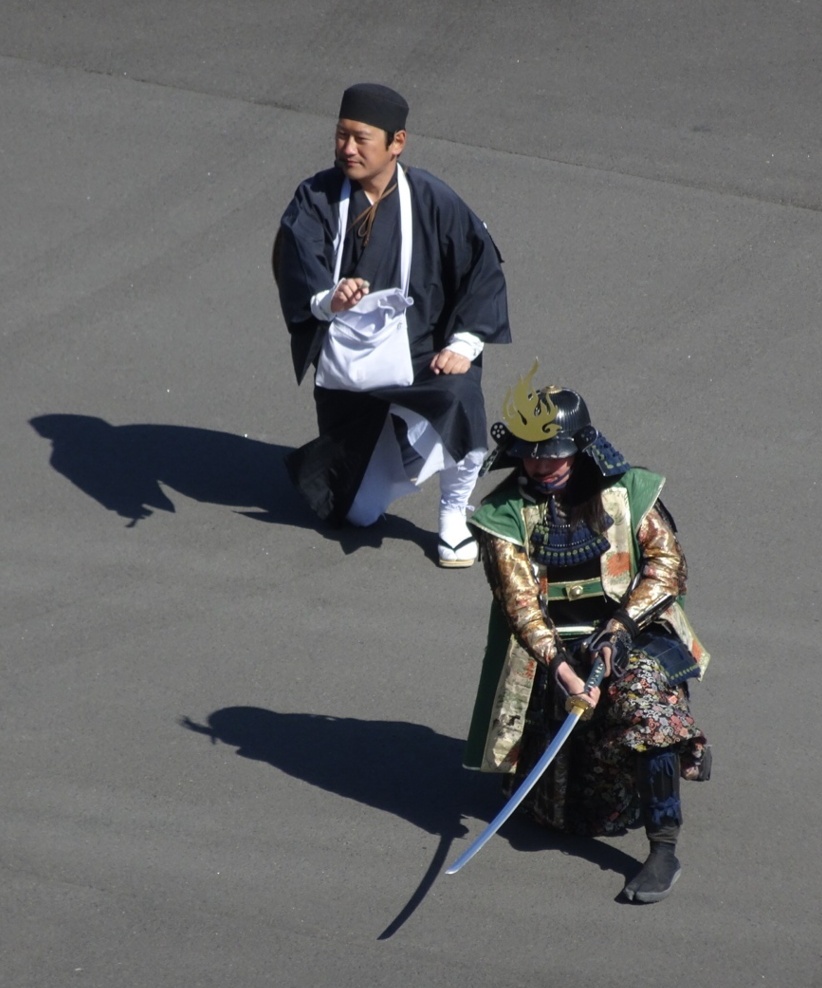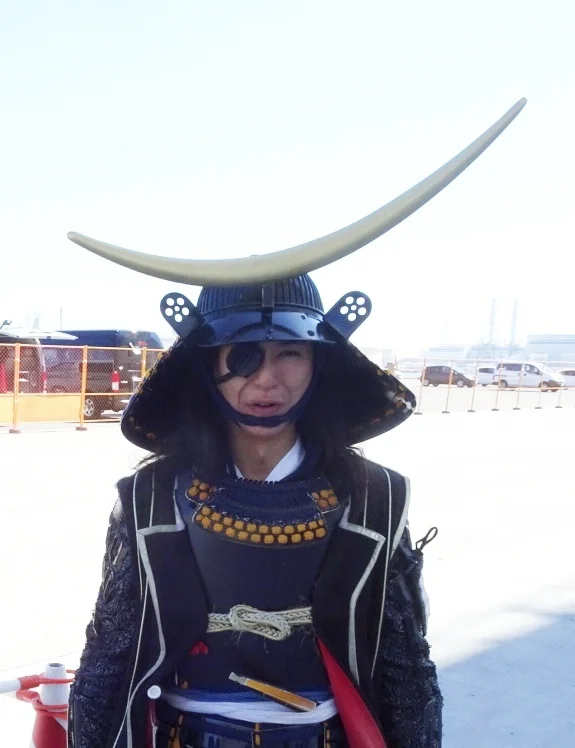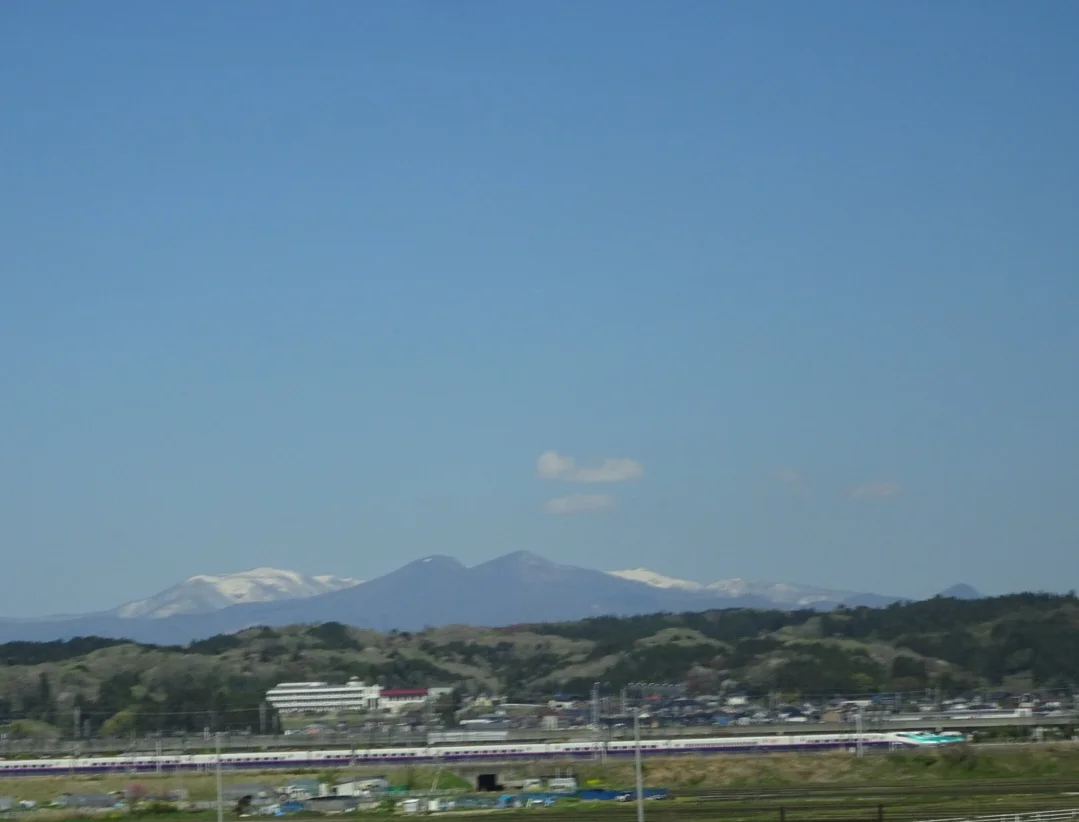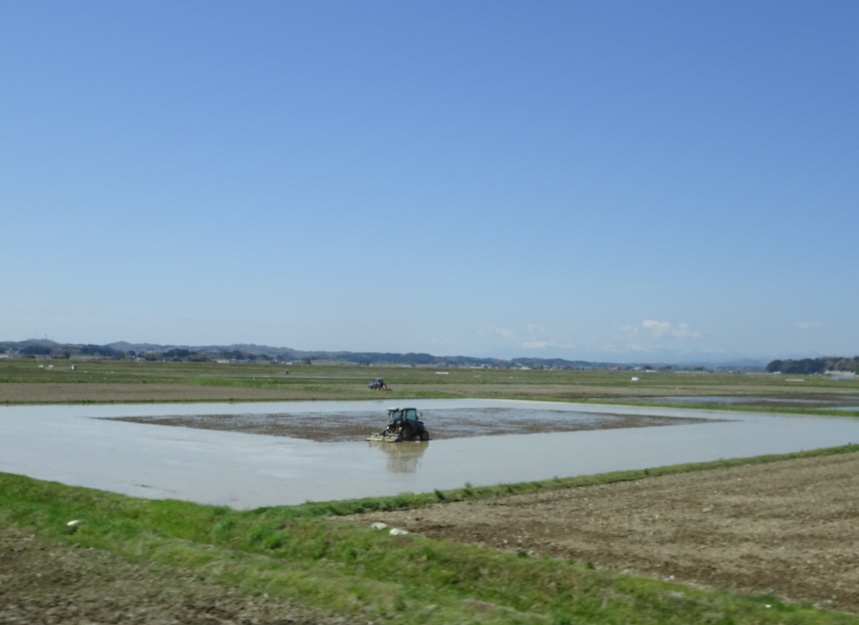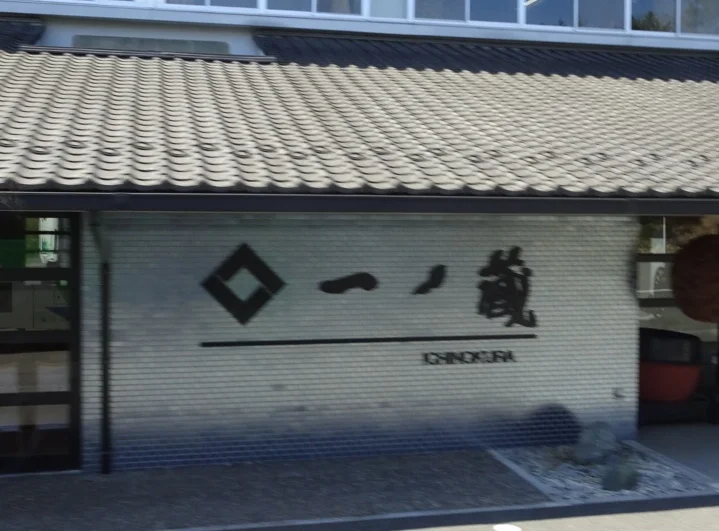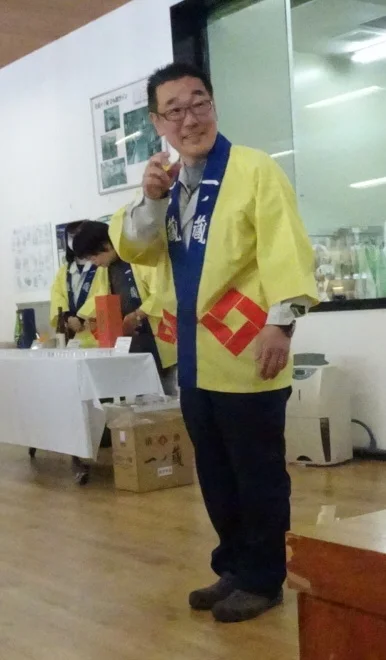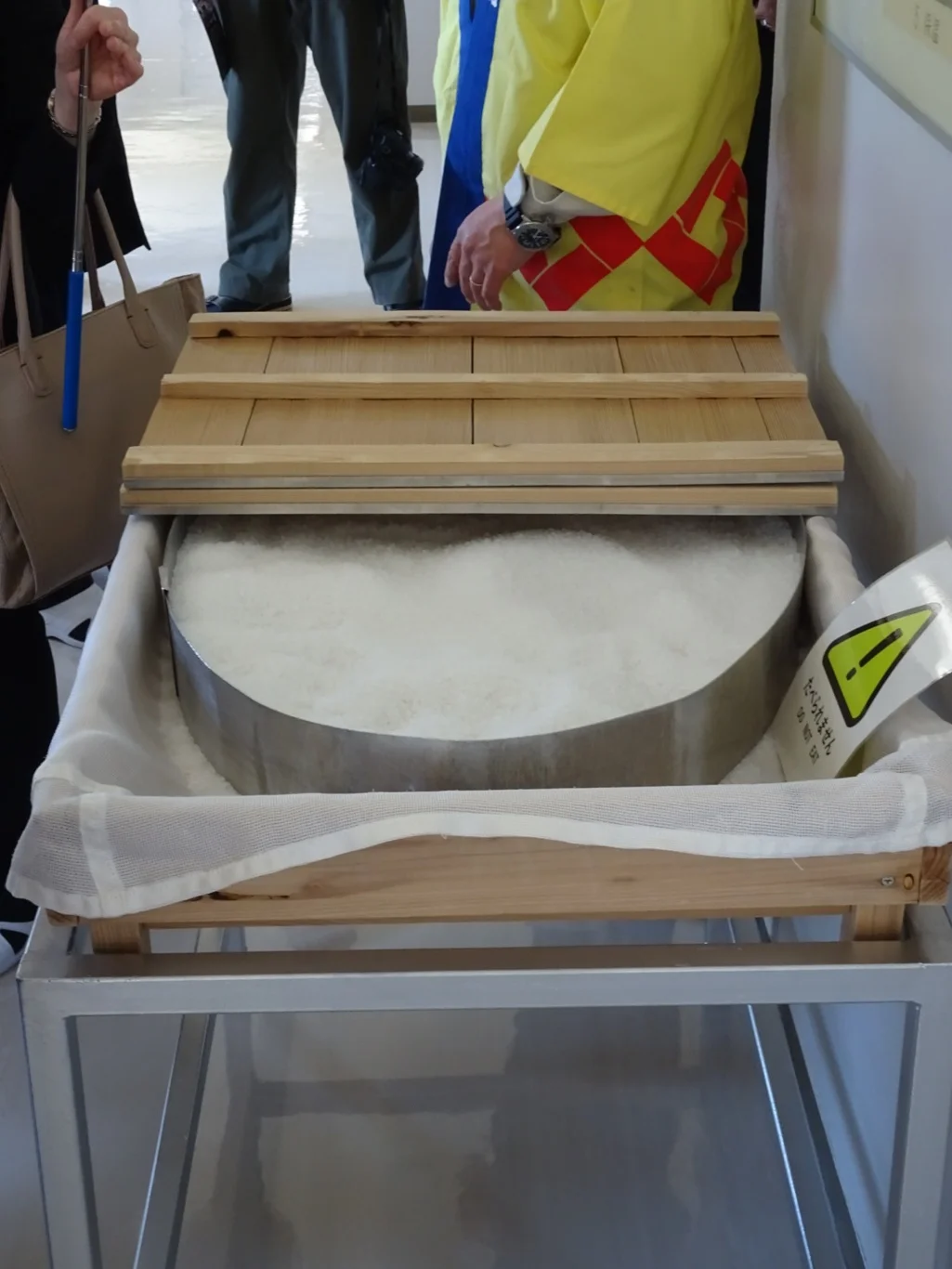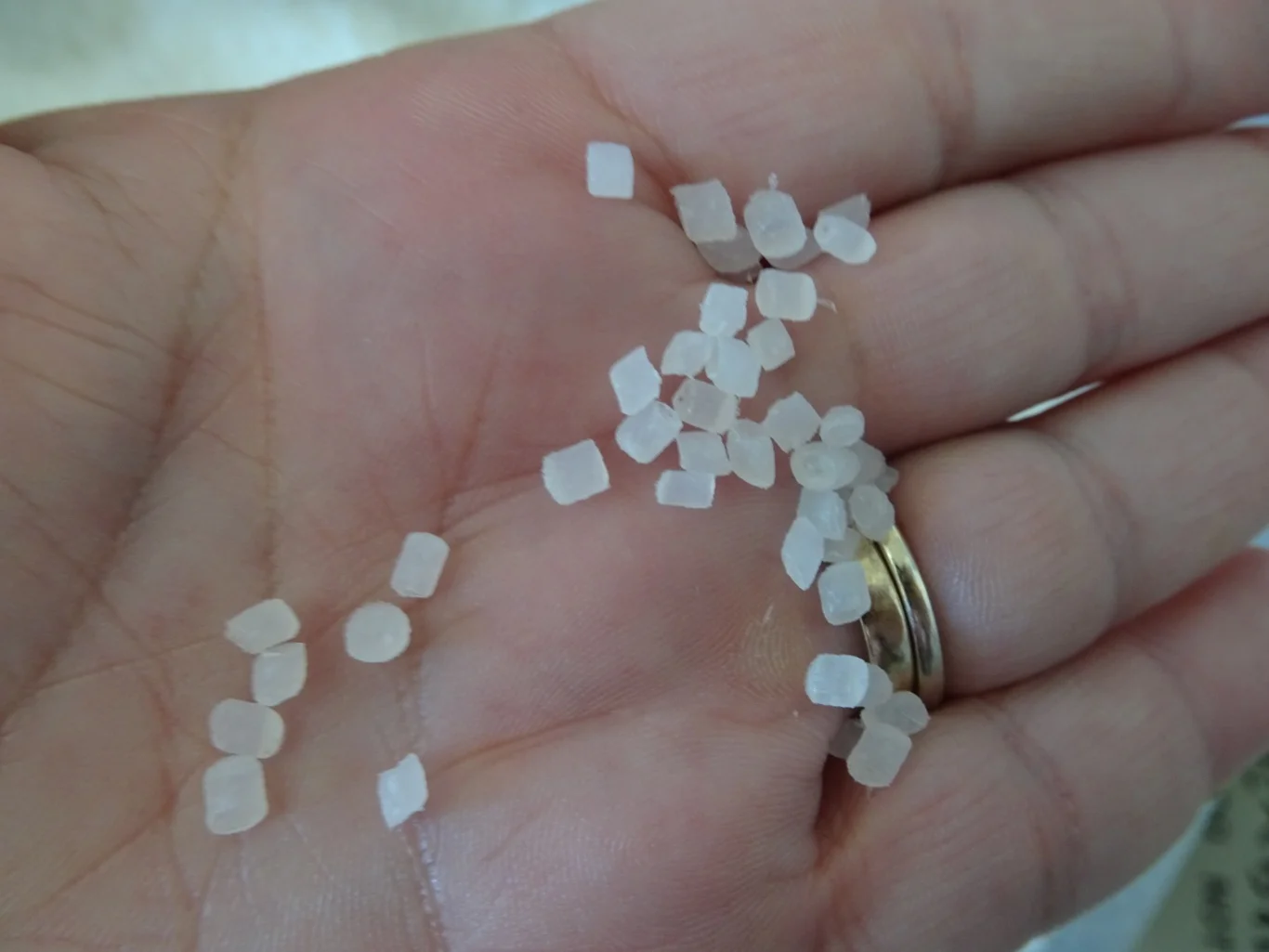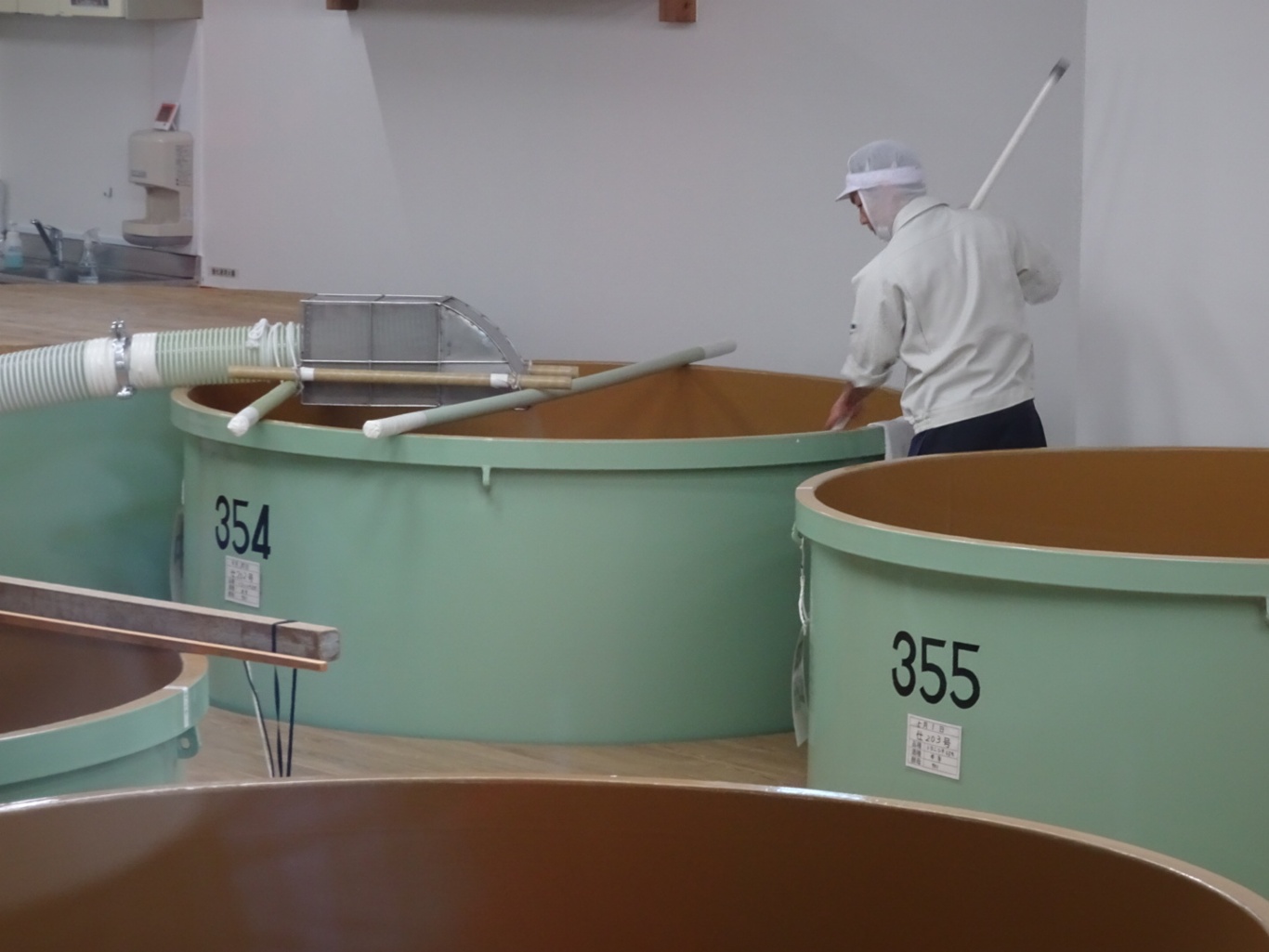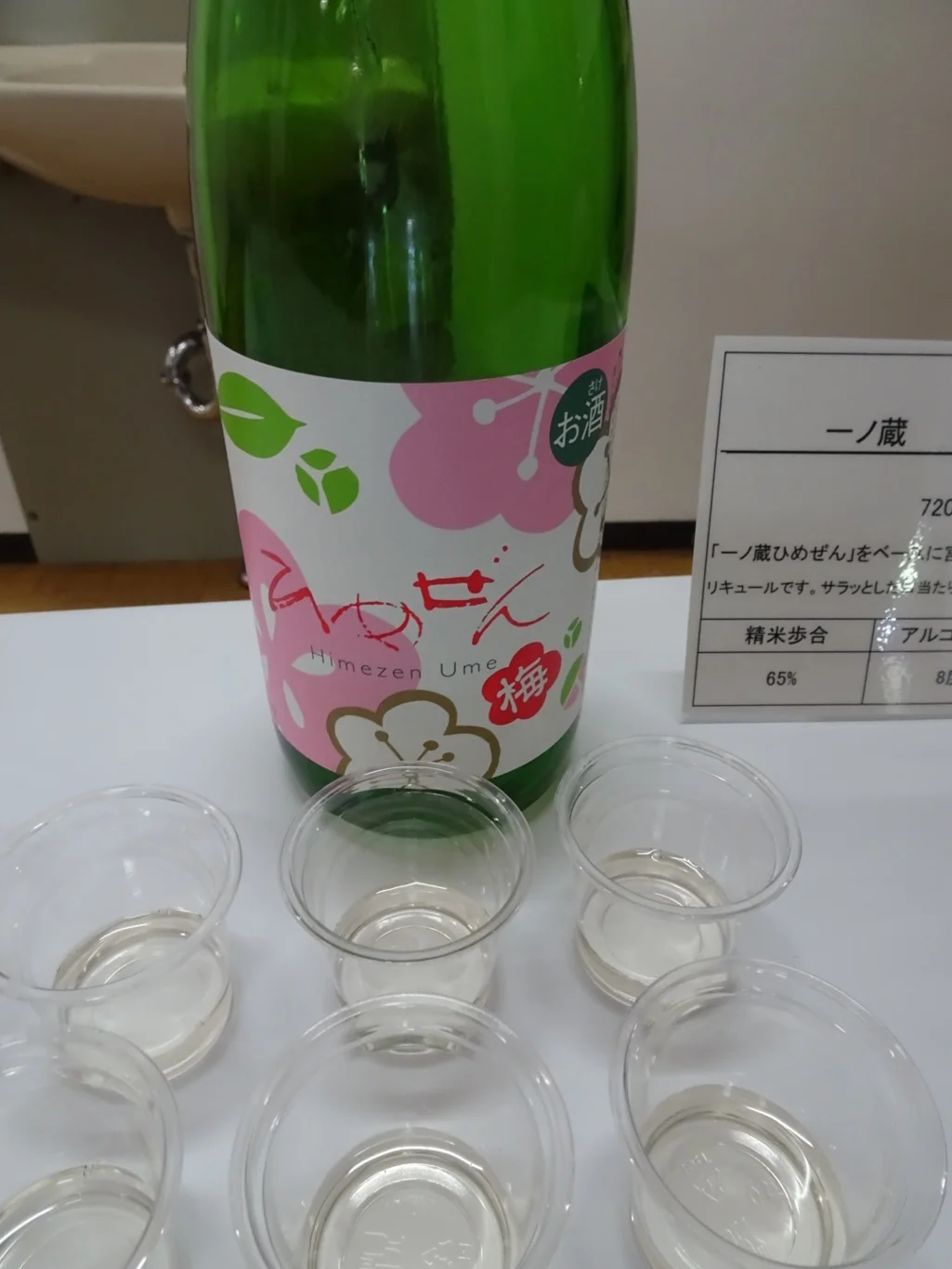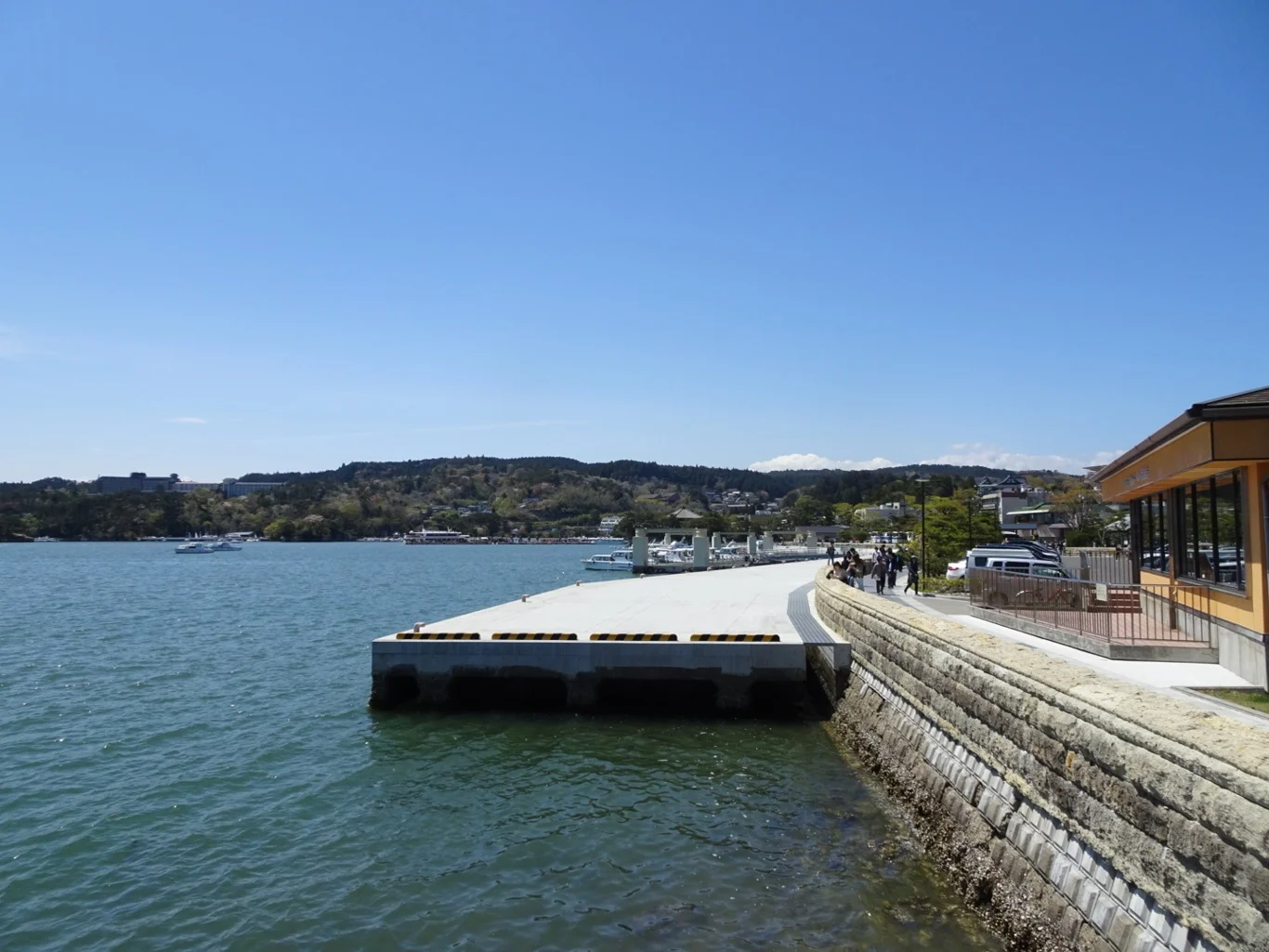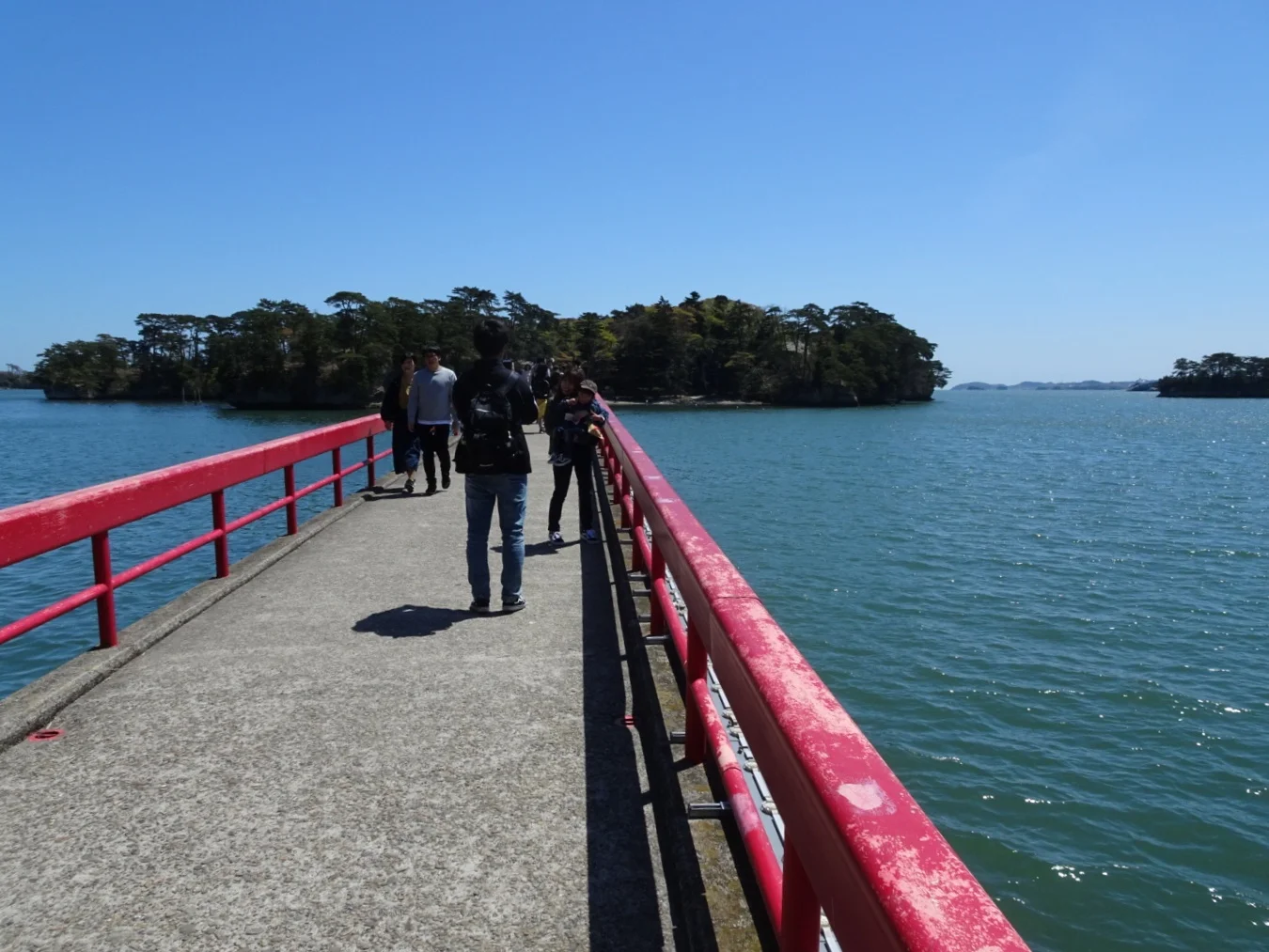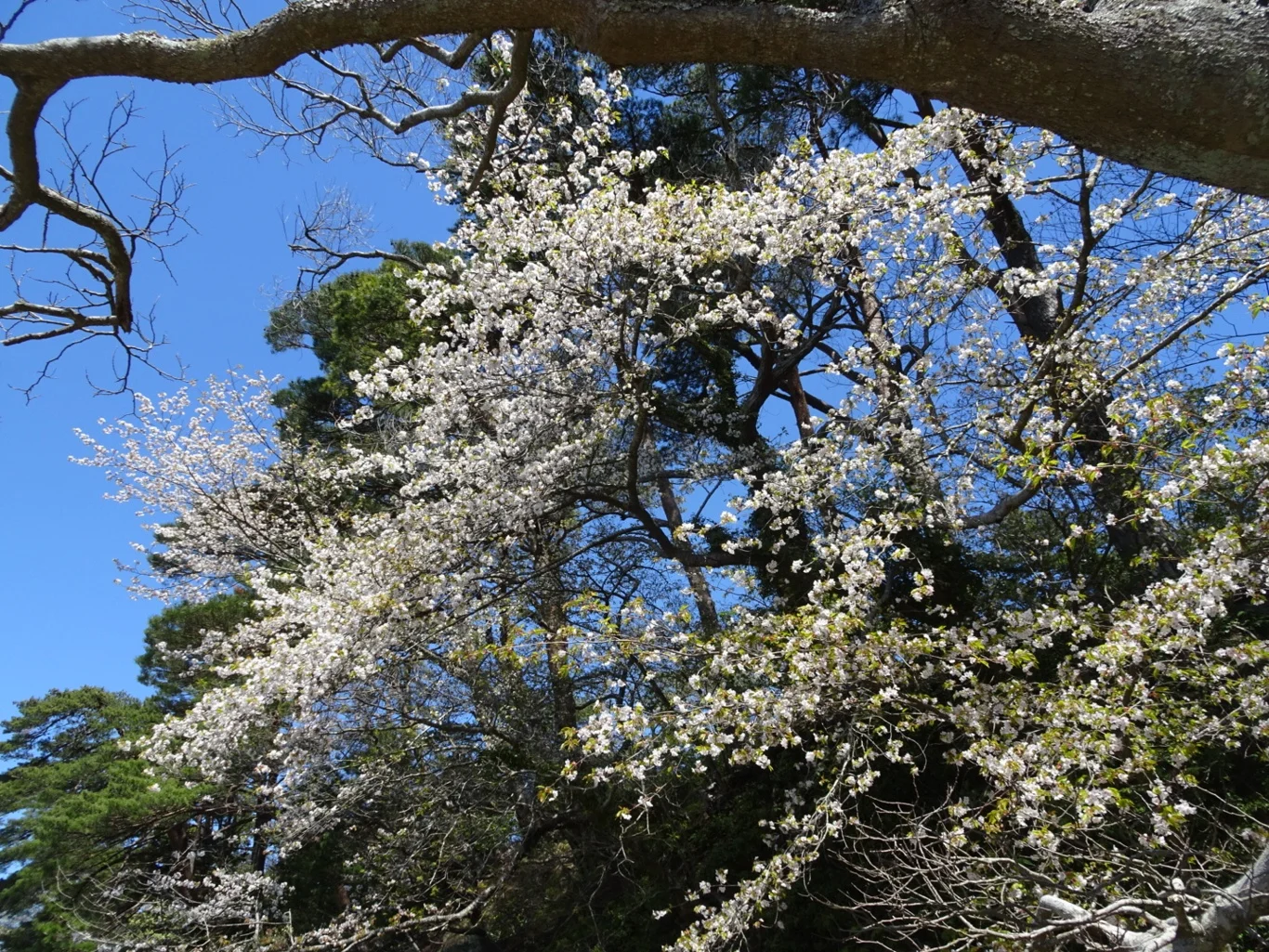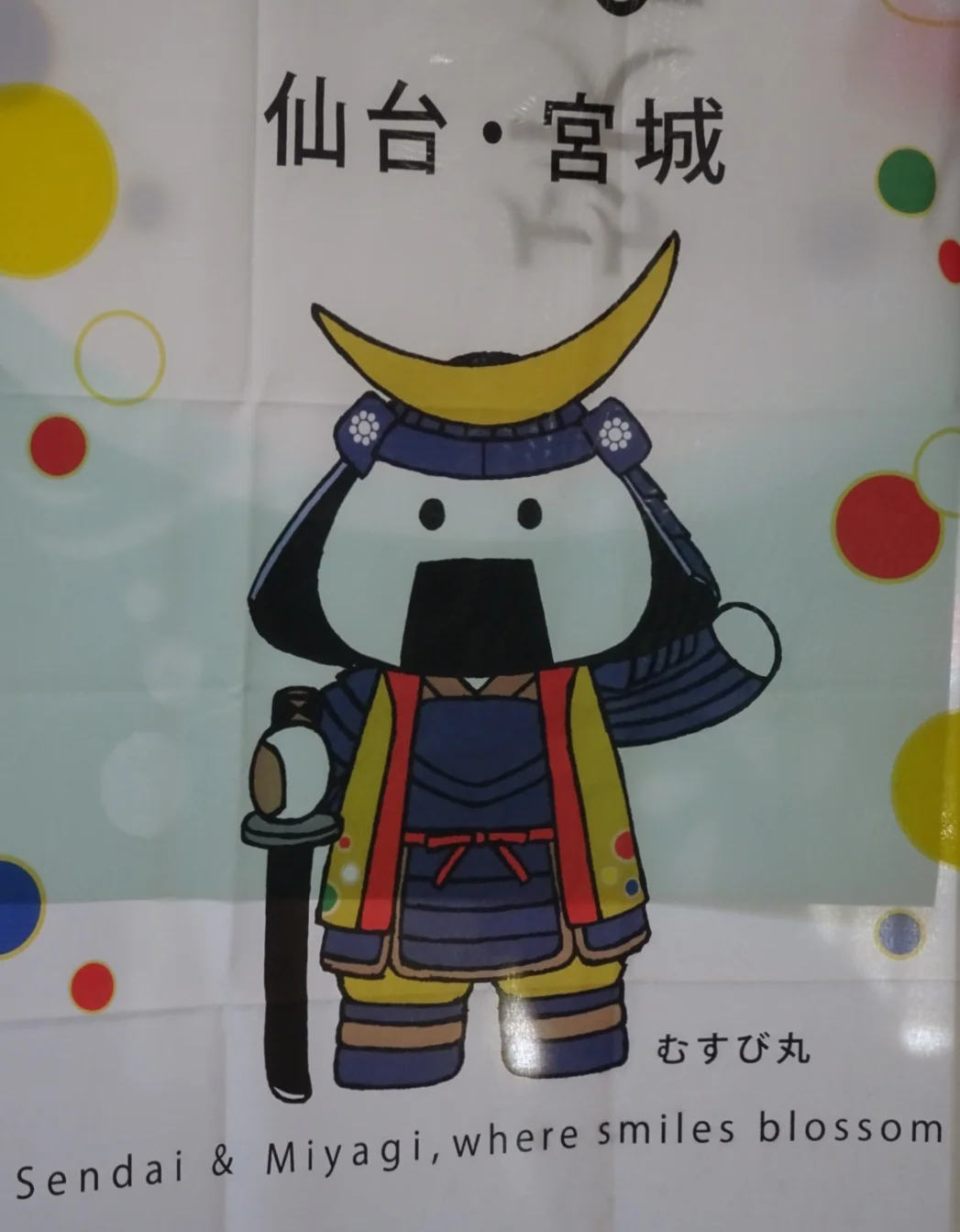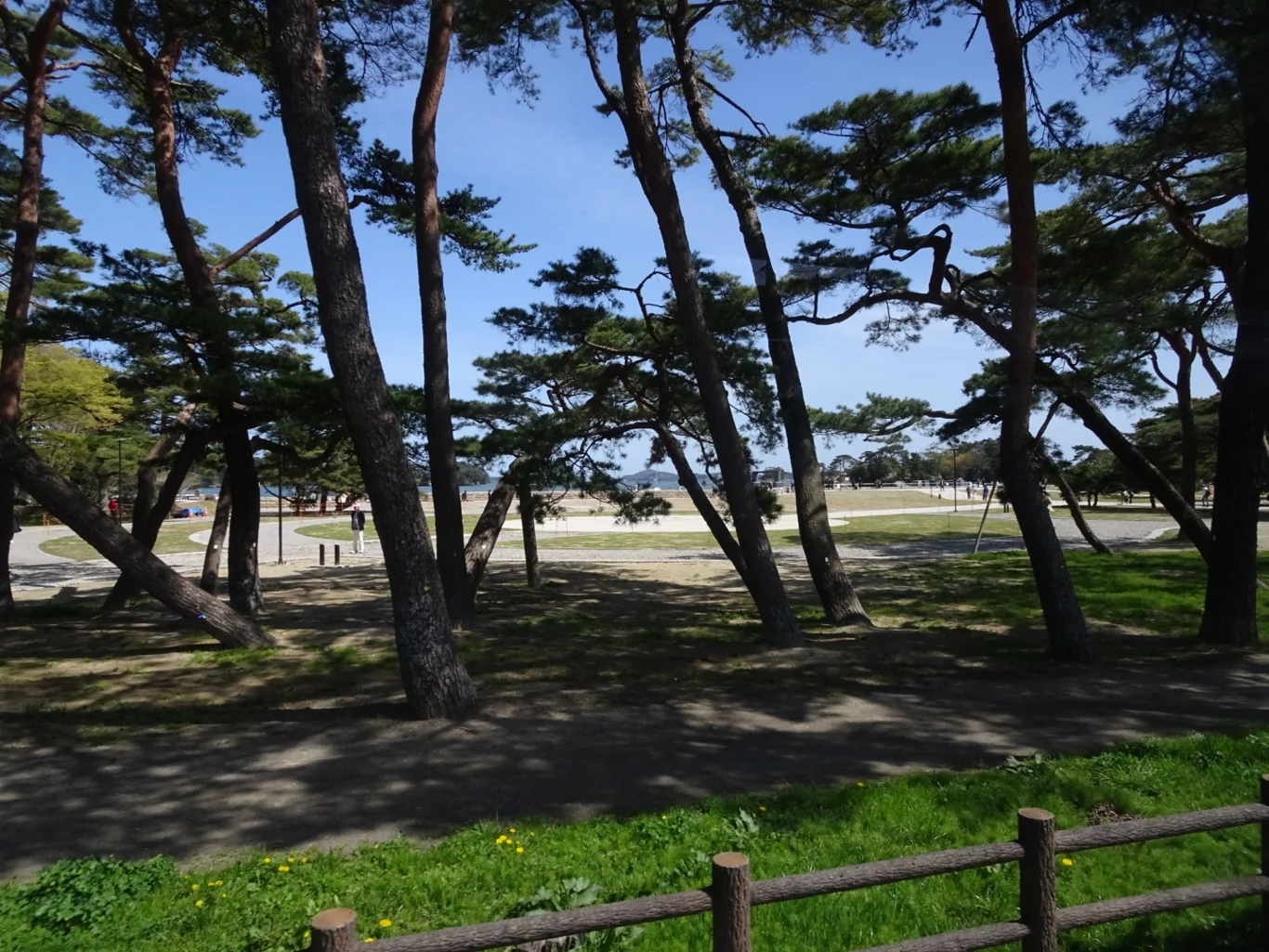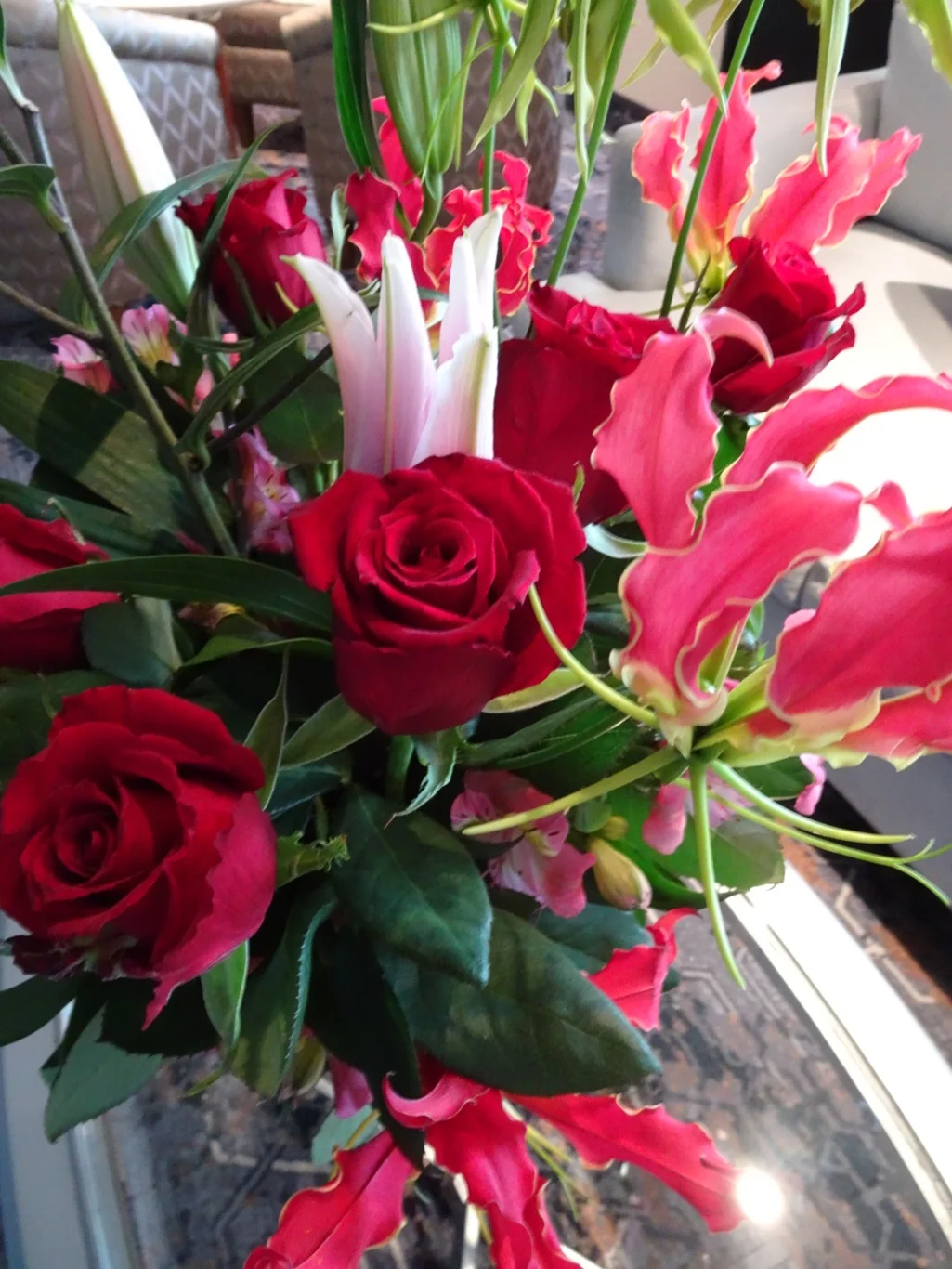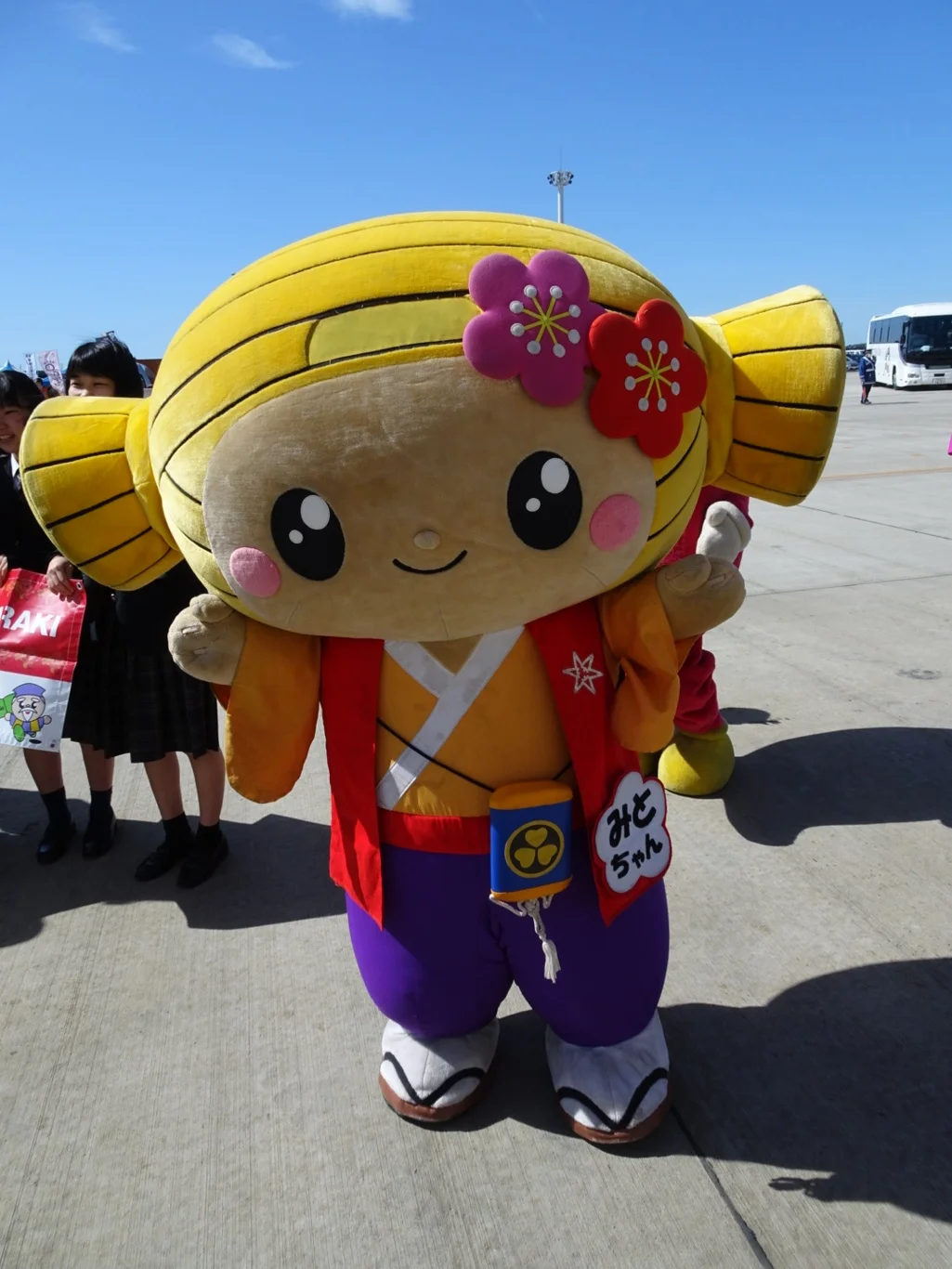We'd never heard of Masamune Date till today
but now I feel that we are quite well-acquainted!
We had a bit of a rude awakening, having arrived in Sendai and not particularly rushing to be up and about. I opened the curtains to a fine view of the snow mountains behind the cement works (or whatever it is) and to hear a voice over a loudhailer. What was going on?
A gang of Samurai were putting on a bit of a show down on the quayside and making a right old racket. Bring back the marching bands, I thought!
My Hero and I had chosen different activities today - I was heading for a visit to the sake factory, so leaving him behind waiting for his historical tour of the city, I went on ahead to join my group. As we got off the ship, we were greeted by this character.
There he was again at the foot of the stairs, wearing that distinctive moon on his helmet (I didn’t notice the eyepatch till later). This is Masamune Date - not the real one, because he was a 16th century Feudal Lord - but as far as I was concerned, the next best thing!
As we drove out through the paddy fields, I was amused to see the Shinkansen whooshing along - the same train as we had caught to Utsunomiya last Friday - because Sendai is just a couple of hours from Tokyo by fast train.
Rice farming here is rather more mechanised from the other SE Asian countries we’ve seen and it’s interesting that the climate here produces just one harvest per year compared with Vietnam, where they obtain three. The rice farmers were busy though, planting this year’s crop having nurtured the seedlings in the polytunnels nearby.
The clean air, the fresh mountain water and the finest quality rice are all put to good use here at the Ichinokura Sake factory, where we arrived ready to learn about the process.
I’m afraid I never did catch the name of our animated guide, who led us through the whole process in Japanese, interpreted each time by our own guide Mie. First we watched a video of the preparation, fermentation, pressing and bottling before exchanging our shoes for plastic slippers and trotting along behind him to peer through a series of windows.
The process begins with the polishing of the rice, which I found rather interesting, especially when we took a closer look at the stuff
The raw ingredient didn’t look like rice at all, more like salt or large crystal sugar, so highly polished was it.
There followed a series of processes, the main message being that although the different grades of sake are made by following the same basic recipe, the standard manufacture is created in a rather different way than the small batch, lovingly tended and higher quality finest connoisseur variety.
We had no trouble discerning the difference first off, for this pink flowery label variety was the plum-blossom flavoured and was a sweet, almost dessert-wine type. The classic sakes we tasted later were very different and yes, of course, the more expensive, the smoother and more palatable. A few carrier bags might have found their way back onto the bus for later sampling!
Our next stop was Matsushima, a popular town known as one of the top three scenic spots in Japan. On this, one of the last few days of the National Holiday, it seemed like every Japanese family in the area had chosen to spend the day here and there was a lively buzz of people enjoying the sunshine, relaxing in a most agreeable place.
We walked over the famous Fuukuro Bridge to a pretty island, though didn’t really have long enough to explore fully. The fresh air was lovely though and I enjoyed the little stroll very much indeed.
We gathered back to hear Mie explain that the driver thought the town “very crowdy” today, so the drive to the next stop, the temple, might take a while. Actually, it wasn’t too bad - and it wasnt very far either.
When we got to oue destination, there he was again, Masamune Date, Feudal Lord of this area and founder of this very temple and the city of Sendai. Mie took the opportunity to tell us his story, of how he lost the sight of one eye as a result of smallpox when he was a small boy and how he went on to be known as “The One Eyed Dragon”. He and his successors were very supportive of culture and the arts and this temple in particular was indicative of his interests. His characteristic eyepatch and the moon symbol upon his helmet are the distinguishing features we might have recognised from those characters who greeted us this morning, of course.
We took off our shoes on the doorstep, put them inside a carrier bag and carried them with us. Sadly, no photos inside, for what we saw was exquisite: a series of rooms with gold painted screens and tatami mats, both simple and elaborate at the same time. As we’d entered the temple, I’d seen a calligraphy station with the “Goshuin” sign. Unfortunately, it also stated “40 min” beneath it - a waiting time too long for us to countenance. Never mind - my slight disappointment was tempered by the discovery of a rubber stamp station at the ticket office when I asked on my way out!
So it was that we left the Japanese families to enjoy their holiday - either queueing for a lunch table or in a traffic jam trying to drive into the town and find a parking space. Such a lovely spot deserves to be popular of course, but perhaps the best day to enjoy it is not on a National Holiday!
As for Masamune Date, I think he could feel quite proud of his legacy and I’m glad to have learned about him.







